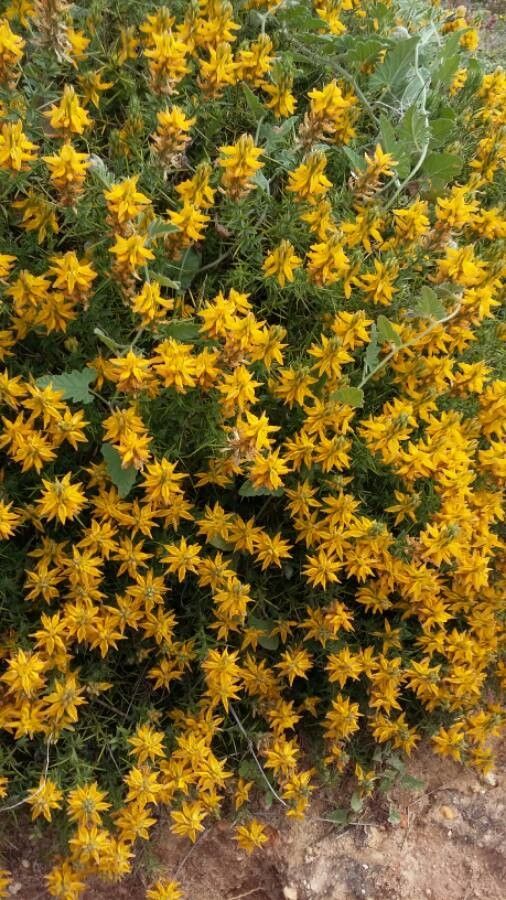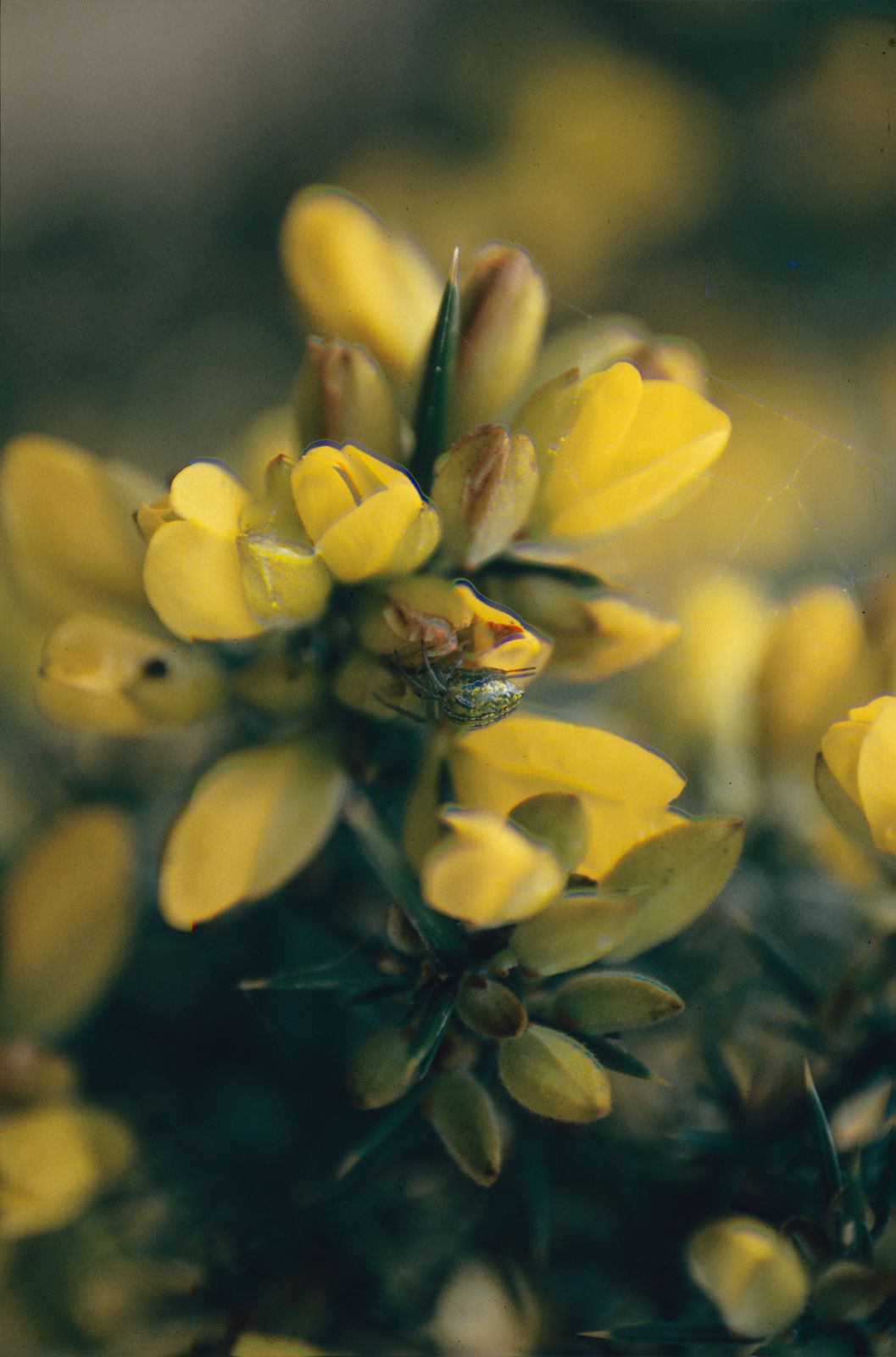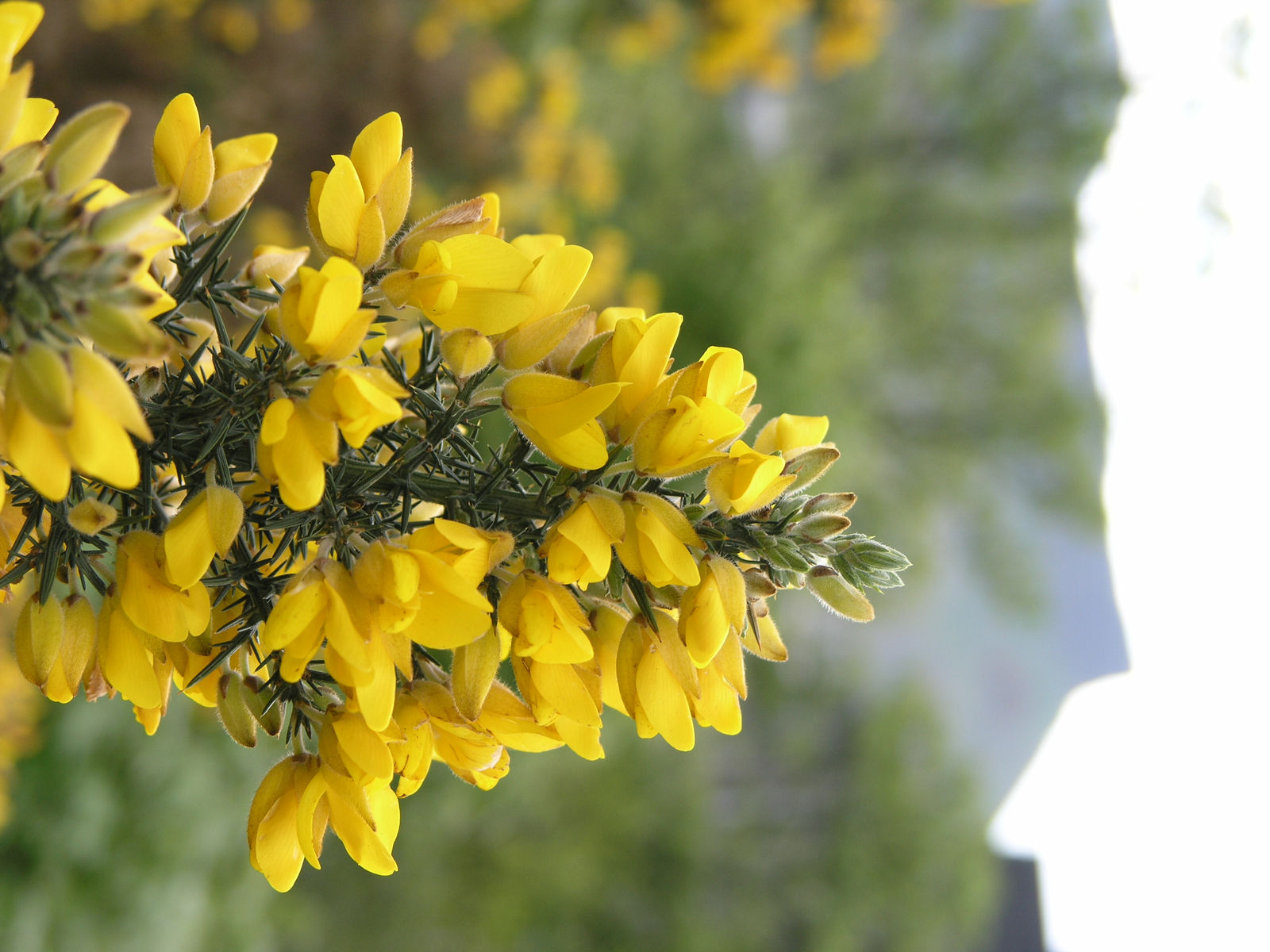Gorse
ulex europaeus
Also known as: ["Common Gorse","Furze","Whin"]
Overview
A spiny, evergreen shrub native to Western Europe, known for its bright yellow flowers and dense growth habit.
Benefits & Perks
["long-flowering","drought tolerant","wildlife attractant (bees, butterflies, birds)"]
Botanical Classification
| Phylum: | Magnoliophyta |
| Class: | Magnoliopsida |
| Order: | Fabales |
| Family: | Fabaceae |
| Genus: | Ulex |
| Botanical Name: | Ulex europaeus |
Plant Characteristics
Basic Information
- Category: Shrubs
- Suitable Location: coastal areas or open fields with poor soil
- Suitable For:
- Is Weed: No
- Allergenicity: moderate
Environmental Needs
- Climate: {"temperatureRange":"0–30°C"}
- Hardiness: {"zones":"7–10"}
- Misting: not required
- Drainage: Fast-draining to prevent waterlogging.
- Soil Type: Well-draining, sandy, or loamy soil with some organic matter. Tolerates poor, acidic soils.
Maintenance Level
- Maintenance Level: low
- Toughness Level: high
- Pruning Frequency: Annually in late winter or early spring before new growth begins.
- Pruning Intensity: Moderate to heavy, depending on desired shape and size.
Care Details
Ideal Sunlight Coverage:
Full sun (6–8 hours of direct sunlight daily). Tolerates partial shade but may become leggy.
Sunlight Tolerance Tips:
Acclimate plants gradually if moving from shade to full sun. Protect from intense midday sun in hot climates to prevent scorching. Outdoor placement is ideal, but ensure adequate light indoors if grown as a container plant.
Care Requirements
Care Difficulty
moderatemoderate
Sunlight
full sun
Rotate plant for even growth; avoid sudden light changes; provide shade during extreme heat.
Watering
every 7–10 days during active growth, less frequently in winter
Water thoroughly but infrequently; allow soil to dry between waterings; avoid overwatering to prevent root rot.
Soil
well-drained, sandy or loamy soil
pH: Acidic to neutral (pH 5.5–7.0).
Avoid heavy clay soils; ensure drainage; amend with organic matter if needed.
Temperature
Prefers cool to moderate temperatures (50–75°F or 10–24°C). Tolerates frost but may struggle in prolonged heat above 80°F (27°C).
Monitor seasonal changes; protect from extreme cold or heat; adjust watering accordingly.
Fertilizing
rarely required, annually in early spring if soil is poor
Fertilize sparingly; avoid nitrogen-rich formulas; apply before active growth begins.
Propagation
Methods
Stem cuttings or seed. Stem cuttings are more reliable for home growers.
Step-by-Step Propagation Guide
- Take 4–6 inch cuttings.
- Remove lower leaves.
- Dip in rooting hormone.
- Plant in medium.
- Maintain humidity.
Best Time: Late spring to early summer when the plant is actively growing.
Environment
Warm (65–75°F or 18–24°C), high humidity (70–80%), and bright indirect light.
Medium
Well-draining mix of perlite and peat moss or cactus mix.
Hormone
Rooting hormone is recommended to improve success rates.
Timeline
Roots may develop in 4–8 weeks; establishment can take several months.
Tools Needed
Pruners, rooting hormone, propagation tray, humidity dome, well-draining medium.
Quick Tips
Use healthy, non-flowering stems; maintain consistent moisture; provide bottom heat if possible.
Pruning & Repotting
Pruning Guide
Method
Cut back stems to healthy buds or lateral branches. Remove crossing or crowded growth.
Pruning Plan
Prune to maintain shape, encourage bushiness, and remove dead or diseased wood.
Tools
Pruning shears, loppers (for larger stems), gloves.
Checklist
Sterilize tools; prune before flowering; remove dead/diseased wood; shape evenly.
Repotting Guide
Best Season
Early spring before active growth starts.
Pot Size
Increase pot size by 1–2 inches in diameter.
Method
Use a well-draining soil mix; gently tease out roots if compacted; ensure drainage holes are clear.
Suggestions
Repot only when root-bound or every 2–3 years. Ulex europaeus prefers being slightly root-bound.
Checklist
Check root-bound status; use fresh soil; trim roots if necessary; water after repotting.
Advanced Care Tips
Watering Mastery
Watering Checklist
Check soil moisture before watering; water deeply; ensure drainage; adjust seasonally.
How to Apply Water Properly
Water at the base of the plant, ensuring moisture reaches the root zone. Water early in the morning to minimize evaporation and fungal issues. Ensure excess water drains away to prevent waterlogging.
Watering Schedule Tips
Water deeply once every 1–2 weeks during active growth, reducing frequency to once a month in winter. Adjust based on rainfall and soil dryness.
Soil Improvement
Add perlite or coarse sand for drainage; incorporate compost for fertility; ensure good aeration.
Temperature Stress Management
Signs of Temperature Issues
Chlorosis (yellowing leaves) in excessive heat; leaf drop or dieback in prolonged cold or frost.
Cold Stress
Low temperatures slow growth but are generally tolerated. Prolonged frost can damage tender growth or cause dieback.
Solution: Mulch around the base to insulate roots. Protect young or sensitive plants with frost cloth during hard freezes.
Hot Stress
Excessive heat can cause wilting, leaf scorch, or reduced flowering.
Solution: Provide afternoon shade in hot climates. Water deeply to cool roots and maintain hydration.
Fertilizing Guide
Fertilizing Checklist
Use balanced fertilizer; apply in spring; avoid over-fertilization.
Fertilizing Method
Use a balanced, slow-release fertilizer in early spring. Avoid high-nitrogen fertilizers, as Ulex europaeus is a legume and fixes its own nitrogen.
Common Problems & Solutions
Toxicity Warning
Cats
ToxicCats are highly sensitive to the toxic alkaloids in Ulex europaeus. Ingestion can result in severe gastrointestinal upset and neurological symptoms, which may be life-threatening without prompt veterinary intervention.
⚠️ Symptoms:
🌿 Toxic Parts:
⚡ Toxic If:
if eaten
Dogs
ToxicThe alkaloids present in Ulex europaeus are highly toxic to dogs, causing severe gastrointestinal and neurological effects upon ingestion. The toxins can lead to serious health complications if not treated promptly.
⚠️ Symptoms:
🌿 Toxic Parts:
⚡ Toxic If:
if eaten
Humans
ToxicUlex europaeus, commonly known as gorse, contains toxic compounds including alkaloids such as sparteine, which can cause significant physiological disturbances when ingested. These compounds interfere with the nervous system and can lead to severe poisoning.
⚠️ Symptoms:
🌿 Toxic Parts:
⚡ Toxic If:
if eaten
Frequently Asked Questions
Q: Is gorse toxic to pets?
A: Yes, gorse is toxic to dogs and cats if ingested.
Q: Does gorse attract wildlife?
A: Yes, its bright yellow flowers attract bees, butterflies, and birds.
Q: Is gorse difficult to grow?
A: Gorse is relatively tough and drought-tolerant, but it requires well-drained soil and full sun.
Quick Reference
| Family: | Fabaceae |
| Care: | moderate |
| Light: | full sun |
| Water: | every 7–10 days during activ |
Get Expert Care Tips
Download the Plantious app for personalized care reminders and plant identification!
Google Play App Store








